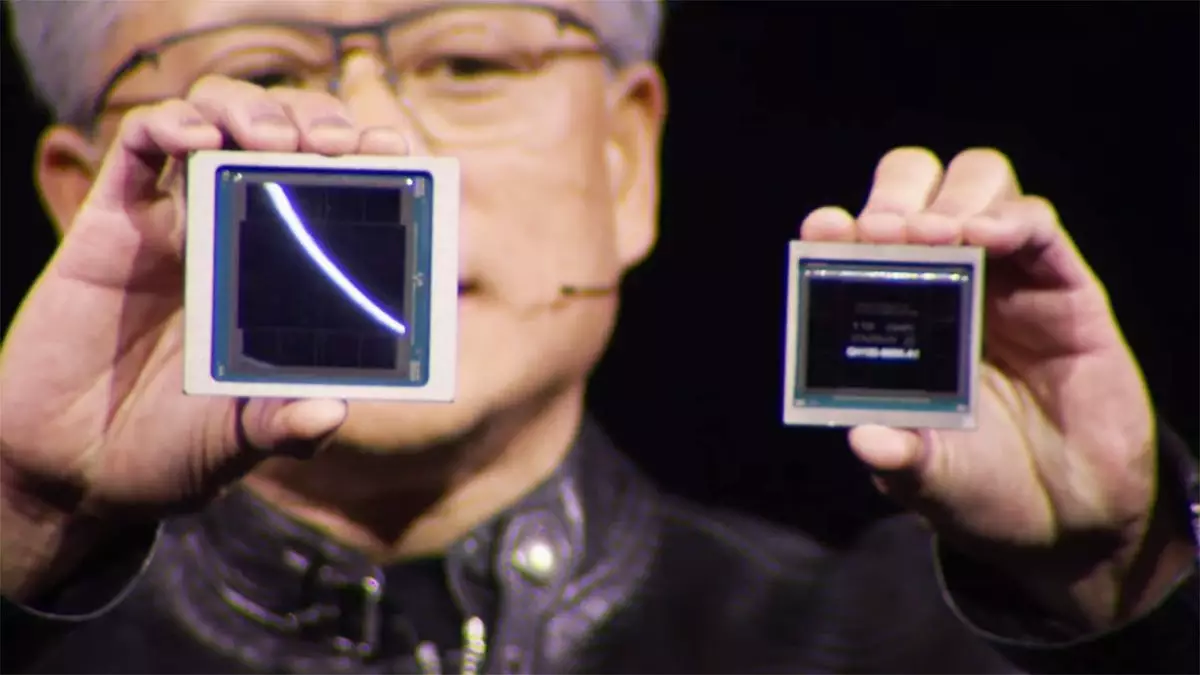In the ever-evolving tech landscape, the arrival of Nvidia’s Blackwell chips has stirred considerable interest and concern. These chips are beginning to make their presence felt within server infrastructures like those of Microsoft Azure. However, the timeline for their release has been fraught with complications. Initially, these chips were projected to hit the market much earlier, but delays have raised questions about the hurried nature of their deployment. The revelations surrounding their performance during testing have only exacerbated these concerns; alarming reports suggest that the Blackwell chips may not be capable of sustaining high-voltage operations typical of data centers—an essential environment for their intended usage.
According to reports from The Information, informed sources indicate that significant post-launch issues were uncovered during rigorous testing. Notably, Nvidia engineers encountered failures within the chips when subjected to conditions commonly found in data centers. Such issues are not unique but represent a deeper-rooted problem that may be symptomatic of greater difficulties in the semiconductor manufacturing process.
The blame game over the shortcomings of the Blackwell chips has escalated tensions between Nvidia and TSMC, their longtime manufacturing partner. On one side, TSMC alleges that Nvidia hastened the production timeline, compromising product quality. Conversely, Nvidia deflects this accountability, attributing the failures to flaws in TSMC’s packaging techniques. The ramifications of these disputes are not trivial; they threaten to undermine a collaboration that has persisted for nearly thirty years, although with notable interruptions, such as the utilization of Samsung for the production of Nvidia’s 30-series Ampere GPUs.
The potential for shifting partnerships is a compelling narrative, especially as Nvidia weighs its options amidst escalating tensions with TSMC. The suggestion that Nvidia might consider returning to Samsung is intriguing, not least because of the financial incentives it could provide—rumored discounts of 20-30% compared to TSMC. Yet, while this sounds attractive on the surface, the realities of the semiconductor industry suggest that such a transition may be fraught with risks.
Samsung, despite being a formidable player in the semiconductor arena, has faced significant operational challenges in recent times. The juxtaposition of Nvidia’s potential return to Samsung unfolds against a backdrop of declining stock prices and concerns from foreign investors. While Samsung remains a giant, the underlying issues associated with their previous partnership with Nvidia are not easily forgotten. The last collaboration produced mixed results, resulting in significant price hikes and GPU shortages that negatively affected consumers and retailers alike.
The question remains: would Nvidia genuinely benefit from a strategic pivot back to Samsung? History suggests it may not be the wisest course of action; the semiconductor landscape has established TSMC as the dominant player. TSMC’s advanced process nodes and focus on third-party fabrication provide Nvidia with capabilities that are currently unmatched by Samsung. Given Nvidia’s ambitions and the universal need for reliable high-performance chips, sticking with a partner that offers proven facilities and expertise may outweigh the allure of lower costs.
As Nvidia navigates this tumultuous period marked by product quality dilemmas and shifting relationships within the semiconductor supply chain, it must prioritize reliability. The stakes are high, especially with the anticipated launch of the RTX 50-series. Consumers and enthusiasts alike will be looking for reassurance regarding quality control measures that prevent defects from affecting future products. Failure to address these foundational issues could spell trouble not just for Nvidia, but for the broader ecosystem of gaming and computing that relies heavily on their innovations.
TSMC’s recent growth, boasting a 39% increase in sales when compared to the same quarter in the previous year, indicates a healthy demand for semiconductors, and their capacity to navigate challenges remains a significant asset. Nvidia would do well to focus on cementing its partnership with TSMC, leveraging their capabilities to ensure product excellence.
The future for Nvidia and its Blackwell chips is a delicate balance of collaborative potential, accountability, and unwavering commitment to quality. Through proactive engagement and strategic decision-making, Nvidia can emerge from this period of uncertainty stronger and more aligned with the demands of the technologically driven marketplace.

